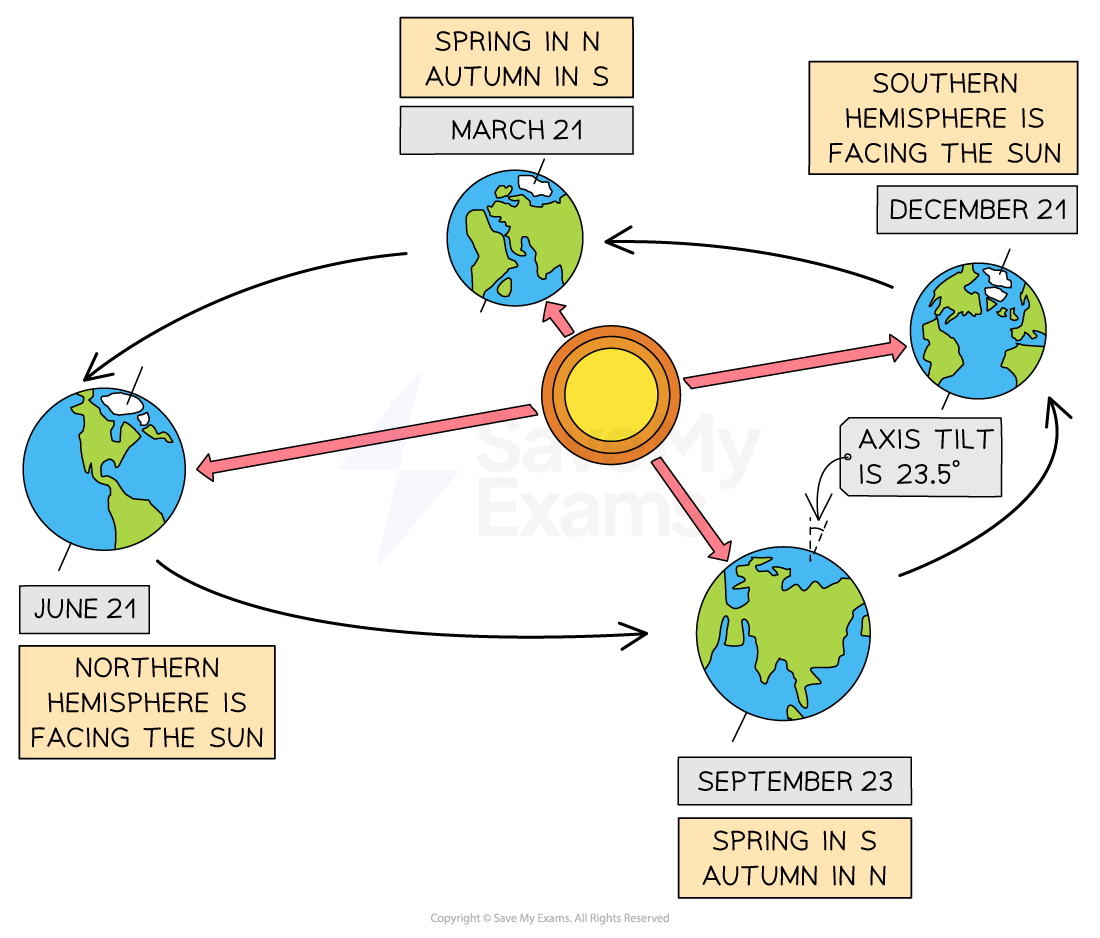Solar Radiation & Earth's Seasons (College Board AP® Environmental Science) : Study Guide
Effect of latitude on insolation
Latitude refers to the distance north or south of the equator, measured in degrees (°), with 0° at the equator and 90° at the poles
Insolation refers to the amount of incoming solar radiation that reaches the Earth's surface
Angle of solar radiation
The angle of the Sun’s rays determines the intensity of solar energy received at different latitudes
At the equator (0° latitude):
The Sun’s rays strike the Earth more directly (higher angle)
This concentrates solar energy over a smaller surface area
This results in higher temperatures and greater solar intensity
At higher latitudes (closer to the poles, 60° to 90° latitude):
The Sun’s rays hit at a lower angle
This spreads solar energy over a larger surface area
This leads to lower temperatures and reduced solar intensity

Decrease in insolation from equator to poles
The highest solar radiation per unit area is received near the equator, decreasing gradually toward the poles
This latitudinal variation contributes to:
Warmer climates in tropical regions
Colder climates in polar regions
The formation of distinct climate zones (tropical, temperate, polar)
Wind formation and global wind patterns
Atmospheric effects on insolation
At higher latitudes, sunlight must travel through more of the atmosphere, which:
Scatters and absorbs more solar energy
Reduces the amount of radiation reaching the surface
This effect further contributes to cooler temperatures near the pole
Seasonal variation in solar radiation
What causes seasonal variation in solar radiation?
The amount of solar radiation received at a location on Earth varies throughout the year
This variation is caused by Earth’s axial tilt (23.5°) as it orbits the Sun
The number of daylight hours also changes, affecting the total energy received at different times of the year
How Earth’s tilt affects solar radiation
Longer summer days vs. shorter winter days
During summer, a location receives more hours of daylight and higher solar intensity
During winter, the same location receives fewer daylight hours and lower solar intensity
Example: The Arctic Circle experiences:
24-hour daylight in summer (when the tilt causes the Arctic to face towards the Sun)
24-hour darkness in winter (when the tilt causes the Arctic to face away from the Sun)
Summer and winter solstices
The summer solstice (around June 21 in the Northern Hemisphere) marks the longest day of the year
The winter solstice (around December 21 in the Northern Hemisphere) marks the shortest day
These dates are reversed for the Southern Hemisphere
Spring and autumn equinoxes
The equinoxes (around March 21 and September 21) occur when day and night are equal in length worldwide
Solar radiation is more evenly distributed across latitudes during these times

Effect on temperature and climate
More solar radiation in summer → warmer temperatures
Less solar radiation in winter → cooler temperatures
This seasonal variation creates climatic patterns that affect ecosystems, agriculture, and weather

You've read 0 of your 5 free study guides this week
Sign up now. It’s free!
Did this page help you?

